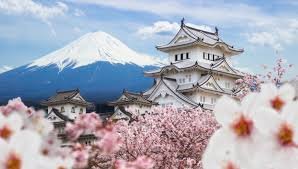
indus river map
The Indus River stands as one of the most historically significant and geographically influential rivers in the world, flowing through China, India, and primarily Pakistan. Originating from the Tibetan Plateau near Lake Mansarovar, it traverses a distance of about 3,180 kilometers before emptying into the Arabian Sea near Karachi. The river is not only one of the longest in Asia but also one of the most important for sustaining agriculture, livelihoods, and civilizations over millennia. Known locally as the Sindhu, the river gave its name to both the region of Sindh and to the country of India itself. Throughout history, this river has shaped human settlements, nurtured ancient civilizations, and continues to provide water for millions of people in South Asia.
Geographic Course and Tributaries
The river’s journey begins high in the Himalayas, where melting glaciers and snowcaps give birth to its early flow. It moves northwest into the disputed territory of Ladakh in India, then turns southward into Pakistan, where it forms the spine of the country’s river system. The Indus has several significant tributaries, including the Jhelum, Chenab, Ravi, Beas, and Sutlej, which together form the Punjab river system. This network of rivers creates the fertile plains of Punjab, aptly named the “Land of Five Rivers.” As the Indus flows further south, it receives additional waters from the Kabul River and other smaller tributaries before expanding into the Sindh plains, where it eventually fans out into a delta at the Arabian Sea.
Historical Importance of the Indus River
Few rivers in human history carry as much weight as the Indus. The Indus Valley Civilization, flourishing around 3300 to 1300 BCE, was one of the world’s earliest urban cultures and thrived due to the fertile lands along its banks. Cities such as Mohenjo-Daro and Harappa rose to prominence because of the river’s consistent water supply and the fertile silt deposited by annual floods. These cities displayed advanced urban planning, drainage systems, and trade networks that were centuries ahead of their time. The Indus was more than a physical feature; it was the foundation of a civilization that influenced South Asian culture for thousands of years. Even in later centuries, when the Vedic and Persian empires expanded, the river continued to play a central role in commerce, agriculture, and spiritual traditions.
Economic Role in Modern Times
In the modern era, the Indus River continues to serve as Pakistan’s primary water source, supporting nearly 90% of the country’s agriculture. The fertile Indus Basin allows for the cultivation of key crops such as wheat, rice, cotton, and sugarcane. Without this river, Pakistan’s agricultural economy would collapse, as most of the country’s terrain consists of arid or semi-arid lands. The river also provides hydroelectric power, with dams like Tarbela and Mangla being among the largest in the world. These projects not only generate energy but also regulate irrigation and help control flooding. However, the demands on the Indus are increasing, as a growing population and industrialization place pressure on the river’s capacity.
Cultural and Spiritual Dimensions
Beyond its economic role, the Indus River holds immense cultural and spiritual value. For ancient civilizations, it was seen as a sacred river, much like the Ganges in India. Its waters symbolize life, fertility, and prosperity, and local folklore often describes the river as a divine entity that nurtures the land. In Sindhi culture, the river is often referred to in poetry, songs, and rituals, symbolizing resilience and continuity. Even today, festivals and community gatherings often take place along its banks, reinforcing its position as a cultural artery that binds people together across regions.
Environmental Challenges Facing the Indus
Despite its importance, the Indus River is under severe environmental strain. Climate change is accelerating the melting of Himalayan glaciers, which initially increases water flow but threatens long-term stability. The river faces issues of water scarcity due to over-extraction for irrigation, inefficient farming techniques, and population growth. Pollution from industrial waste and untreated sewage has degraded water quality in many stretches. Additionally, the construction of multiple dams and barrages, while beneficial for irrigation and energy, has altered natural flow patterns, affecting the ecosystems that depend on seasonal flooding. The Indus Delta, once a thriving ecosystem supporting mangroves and fisheries, has shrunk drastically due to reduced water flow, leading to coastal erosion and loss of biodiversity.
The Indus Waters Treaty
One of the most critical aspects of the Indus River in the geopolitical context is the Indus Waters Treaty of 1960, signed between India and Pakistan with the help of the World Bank. This treaty is often regarded as one of the most successful examples of water-sharing agreements in modern history. Under its terms, the waters of the eastern tributaries (Ravi, Beas, Sutlej) were allocated to India, while the western rivers (Indus, Jhelum, Chenab) were designated for Pakistan. Despite multiple wars and ongoing tensions between the two countries, the treaty has largely remained intact, ensuring a degree of stability over shared water resources. However, rising water demands and climate pressures are challenging the sustainability of this arrangement in the 21st century. For deeper insights into the treaty and its implications, readers can explore this resource.
Biodiversity and Natural Life
The Indus River supports a variety of flora and fauna, many of which are unique to its ecosystem. The Indus River dolphin, one of the rarest freshwater dolphins in the world, is found only in this river and has been classified as endangered. Numerous fish species thrive in its waters, supporting local fishing communities. The river’s floodplains also provide habitats for migratory birds, making it an important site for biodiversity. However, the loss of water flow, rising pollution, and habitat destruction have placed many of these species at risk, signaling the urgent need for conservation efforts.
Future Prospects and Sustainability
The future of the Indus River is intertwined with the future of South Asia itself. Effective management requires regional cooperation, sustainable farming techniques, and modern irrigation technologies. Introducing water-efficient crops, reducing waste, and investing in renewable energy can reduce dependence on the river’s finite capacity. International cooperation will be essential, particularly between India, Pakistan, and China, as climate change does not recognize political boundaries. A growing number of experts emphasize that if managed properly, the Indus can continue to serve as a lifeline for future generations, but if neglected, it could become a flashpoint for conflict and ecological disaster. For scientific studies and conservation measures, readers may refer to this overview.
Conclusion
The Indus River is not just a body of flowing water but a symbol of civilization, survival, and continuity. From nurturing the world’s earliest urban settlements to sustaining modern economies, the river has remained central to the identity of the region. Yet, the challenges it faces are immense and cannot be ignored. Climate change, pollution, population growth, and geopolitical tensions all threaten the river’s future. Preserving it will require collective willpower, scientific innovation, and respect for nature’s balance. The Indus has given life to countless generations, and it now calls for humanity’s responsibility to ensure its flow remains eternal.






